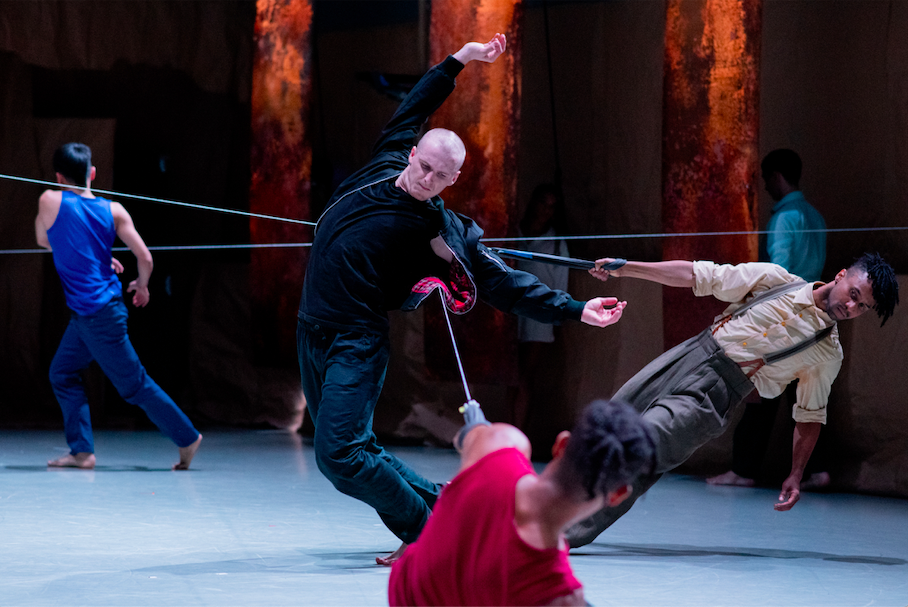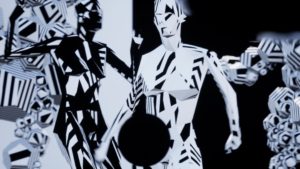London, October 2020 - Vancouver Ballet Society
- Home
- City Reports 2020 - 2023
- London, October 2020

By Sanjoy Roy
Dance in London — what is that? Six months ago the question had never crossed my mind; now it’s at the forefront, and I don’t have an answer. The coronavirus crisis has had a devastating impact on dance, which, more than all other arts save circus, I think, relies on bodily presence, in creation, in performance, in reception. It’s no exaggeration to say that the whole dance infrastructure — companies, theatres, artists, technicians, caterers, cleaners — is haemorrhaging, and on life support. I have seen no live dance onstage since March. Plenty on screen and online, but that’s been a strangely dislocating experience. If it’s on screen, is it really dance? And if it’s watched by people anywhere in the world, is it really dance in London?

I can make only one claim with confidence: the screen — or viewing device — has leapt centre stage, and for better or worse (or better and worse), is hogging attention and bending dance to its needs. Take the one live event — a big one — that I witnessed: the return of the Royal Ballet to the Opera House stage on October 9. With the entire stalls taken over by the spaced-out orchestra, and an invited audience of students and health workers occupying the 20% limit of allowable seating capacity, the vast majority, including me, watched online — and many experienced technical glitches. Since the online audience now counts as the main one, the Opera House will really need to sort those glitches out.
On the upside: the Opera House, already familiar with cinecasts, is adept at getting film angles and cuts right, and indeed the program — a gala feast of duets and small groups — lent itself to the screen in a way that ensemble choreography rarely does. A bigger upside: the dancers, the dancing. The company returned to the stage with a palpable spring in their step — a pleasure to watch, and heartwarming. There were notable cameos from zippy Vadim Muntagirov and Marianela Nuñez in the Don Quixote pas de deux, and barnstorming Mayari Magri and Matthew Ball in a rare duet from MacMillan’s Carousel. Edward Watson, soon to retire from the stage, gave a movingly complex portrayal of war veteran Septimus Smith in a trio from Wayne McGregor’s Woolf Works, a worthy counterweight to the sunshine-and-smiles pairing of Marcelino Sambé and Anna Rose O’Sullivan in a pas de deux from Ashton’s La Fille Mal Gardée.
Rambert’s Draw from Within, a new work by Belgian choreographer Wim Vandekeybus, was intended to be broadcast online only as a livestream — but technical glitches put paid to that, and they had to offer an on-demand version as well. The piece, which saw Rambert’s excellent dancers performing though the studios, corridors and stairways of the company headquarters, was commissioned specially for online transmission, and though we couldn’t see them, the camera operators were clearly choreographed as tautly as the dancers. The result was thrilling: we swooped and panned and zoomed inside the choreography itself, as if moving within rather than just watching this rollercoaster of a dance. Further countering the notoriously flattening effect of the screen, Vandekeybus used swirling smoke trails that rendered motion visible and the air palpable. A darkly opaque and somewhat overlong piece, Draw from Within nevertheless pulled you, by the neck, into its sweep.

The Barbican Centre went ahead with its retrospective exhibition on the iconoclastic, era-defining dancer/choreographer Michael Clark — without the planned live performances. So, once again, screens dominated, the centrepiece being Charles Atlas’s multi-screen installation showing archive footage, mostly from the 1980s, of rehearsals, performances and interviews. In fact, it worked wonderfully, showing Clark’s provocateur blend of classical beauty and up-yours attitude. Baby-cheeked of both face and butt (he loved a provocatively cutaway costume), Clark’s youthful presence stamps the mood of the whole exhibition, simultaneously devilish and divine.

While all the dance world was turning toward screens, it seemed that the screen world was turning toward dance. The British Film Institute’s London Film Festival launched LFF Expanded, a new strand looking at the “convergence,” as the lingo has it, between digital, screen and live arts in the area of virtual, expanded, augmented and mixed reality (the profusion of terms is indicative of the ferment in this field). Some of these “experiences” (that lingo again) incorporated dance: a physical pop-up book, its story told by inky dancing silhouettes who swirl right off the page; a show of song-and-dance numbers that mixed realism and animation; black-and-white virtual rooms based on World War One “dazzle camouflage” (think of a cross between German black-and-white virtual rooms (think of a cross between German Bauhaus, 1960’s op art and a liquorice allsort) where cuboid dancers pass through the viewer like digital ectoplasm; a teleportation into the inside of a vogue ball. The works on offer were fascinating and novel, and a sign of a new artistic field developing alongside its technical devices (headsets, joysticks, camera apps) — all undoubtedly spurred by the COVID crisis.
And so to the only live dance I saw: outdoor performances at the annual Greenwich and Docklands International Festival — this year, because of COVID-19, restricted to UK companies only. The plus side: it was live dance and, with sparse, socially distanced audiences, sightlines were much better than in most public-space events. The downside: the screen, again! Outdoor performances, regardless of their intention or integrity, seem destined to be treated as Instagrammable. Some of the festival’s pieces — particularly a subtly modulated, physically intense and beautifully performed work by Humanhood (Júlia Robert Parés and Rudi Cole) — made me long for a place designed to focus and sustain attention on the dance and choreography rather than the image and the occasion: the viewing device we call theatre.

